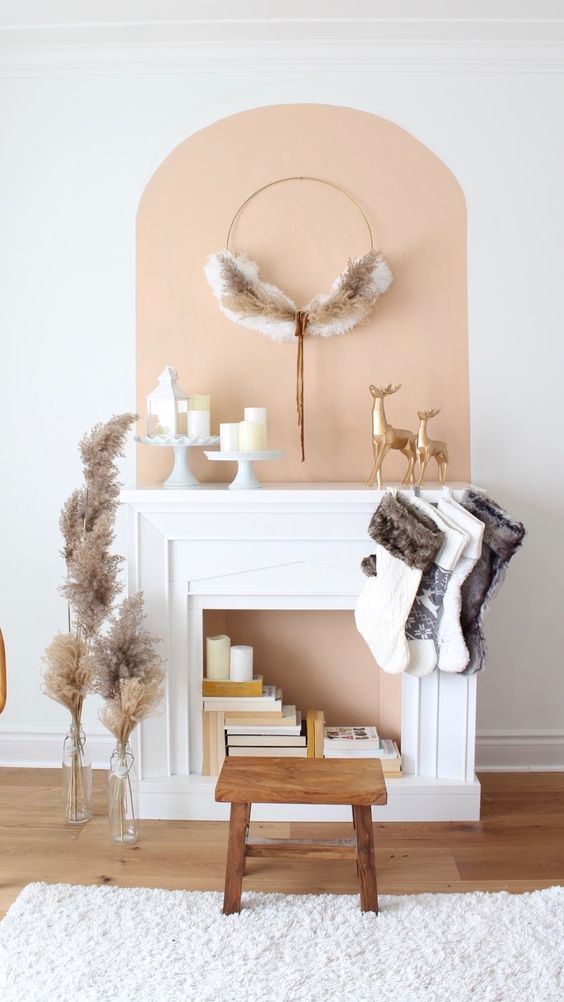Fireplaces 101
- Haven
- Dec 11, 2020
- 4 min read
Updated: Feb 21, 2023
Fireplaces are such great opportunities to give some oomph to your home decor. Whether you have a small gas fireplace or a massive stone wood-burning hearth, fireplaces are versatile design elements that we love!

Image via: Digs Digs
Whether you have an existing fireplace that you want to update or you’re starting from scratch, it’s important to understand the various parts of fireplaces.
The FIREBOX
This is where the actual fire burns! This part has to be made of heat resistant material. Often it is fire-brick but it can be made of other materials as well.
The HEARTH
The hearth is the bottom of the fireplace. It usually extends into the room a bit. It’s made of a non-combustible material (some sort of stone, tile, brick) because even though it’s not where the flames are resting, it still can get pretty warm.
You are REQUIRED to have a hearth for wood burning fireplaces, not needed for gas or electric varieties. The reason for this is pretty simple, if you’re burning actual wood, it’s more likely that pieces of bark or embers will spit out of the fireplace during the burning, even if you have a well vented chimney. Since gas fireplaces don’t burn actual material, they don’t have hot embers to spit out at you, so they don’t need a hearth to protect floors and such.
The hearth has an inner hearth and an outer hearth. The inner hearth is where the fire sits (within the firebox), the outer hearth is what extends into the room if needed.

Image via: Pinterest
The MANTLE
This is the decorative top piece of a fireplace, usually supported by legs or columns on either side, but it can also be floating. Not all fireplaces have mantles, especially more modern styles.
The MANTLE SHELF
This is what people most commonly refer to as simply the mantle. This is really just the ledge where you might put your decorations or rest a piece of artwork on. Not all mantles have shelves, since it could just be flat to the wall.
The CLADDING or FACING
The area around and above the firebox area. There are multiple terms for this area and you can use a wide variety of materials to change the style of the fireplace; stone, brick, wood, tile, etc. Sometimes the material on the cladding matches the materials for the mantle, but it doesn’t have to.

Image via: Architectural Digest
FIREPLACE MATERIALS
When building a fireplace, materials are very important. Obviously the firebox of a fireplace needs to be made with heat resistant materials like brick or stone, but the mantle and cladding can be done in wood if you’d like. Really the only materials you can’t use are plastics (which makes sense, think of the melting!), but make sure you research materials well before choosing. Limestone for example, is a beautiful material and is heat resistant, but it stains very easily from even just fingerprints, so we wouldn’t choose it for use in a busy house!
The material you choose for your fireplace should be integrated into whatever style you’re trying to capture, but be creative! Just because brick or large stone might lean towards more traditional style on their own doesn’t mean you can’t change it up a bit. Paint brick white to become more contemporary, or black to become more modern, or add a wood mantel and a sleek hearth to the large round stone look to put a modern twist on farmhouse style.

Image via: Scout & Nimble
DON’T FORGET THE SIDES
Make sure you’re also taking into account the space along each side of the fireplace in your room. Especially if your fireplace is in the center of the room, you want to address these areas. It can be as simple as fresh paint and some artwork or as complex as full built-ins, but don’t forget about it! If you want your fireplace to be the major focal point without distractions, pick a contrasting paint color to help it stand out and leave the side walls pretty empty. If you want a more blended look, adding built-ins or using cabinets with artwork above will draw the eye throughout the room. When you’re going for minimal, use the same color on the walls as the fireplace cladding.

Image via: Harlow & Thistle
GO FAUX
Can’t do a real fireplace? Fake one! This can be as simple as attaching a mantle and legs to the wall for a space to decorate, or use drywall to build out a faux firebox. These can be great additions to rooms that up the luxe factor without the huge price tag of properly venting and installing a fireplace.

Image via: Burke Decor
TAKE IT OUTSIDE
Of course, fireplaces are great for outdoors too! They help extend your patio season too, which we’re all about in Chicago. If you’ve got the space you can build a larger full chimney fireplace that’s more permanent, but smaller spaces can enjoy sleek fire bowls or even small chimeneas.
Whether wood burning or gas, real or faux, fireplaces are a chance to make a statement in your home and create a strong focal point or wow factor.
Love, HAVEN
PS – This topic was a Tuesdays at Two session! You can watch the full video here:


